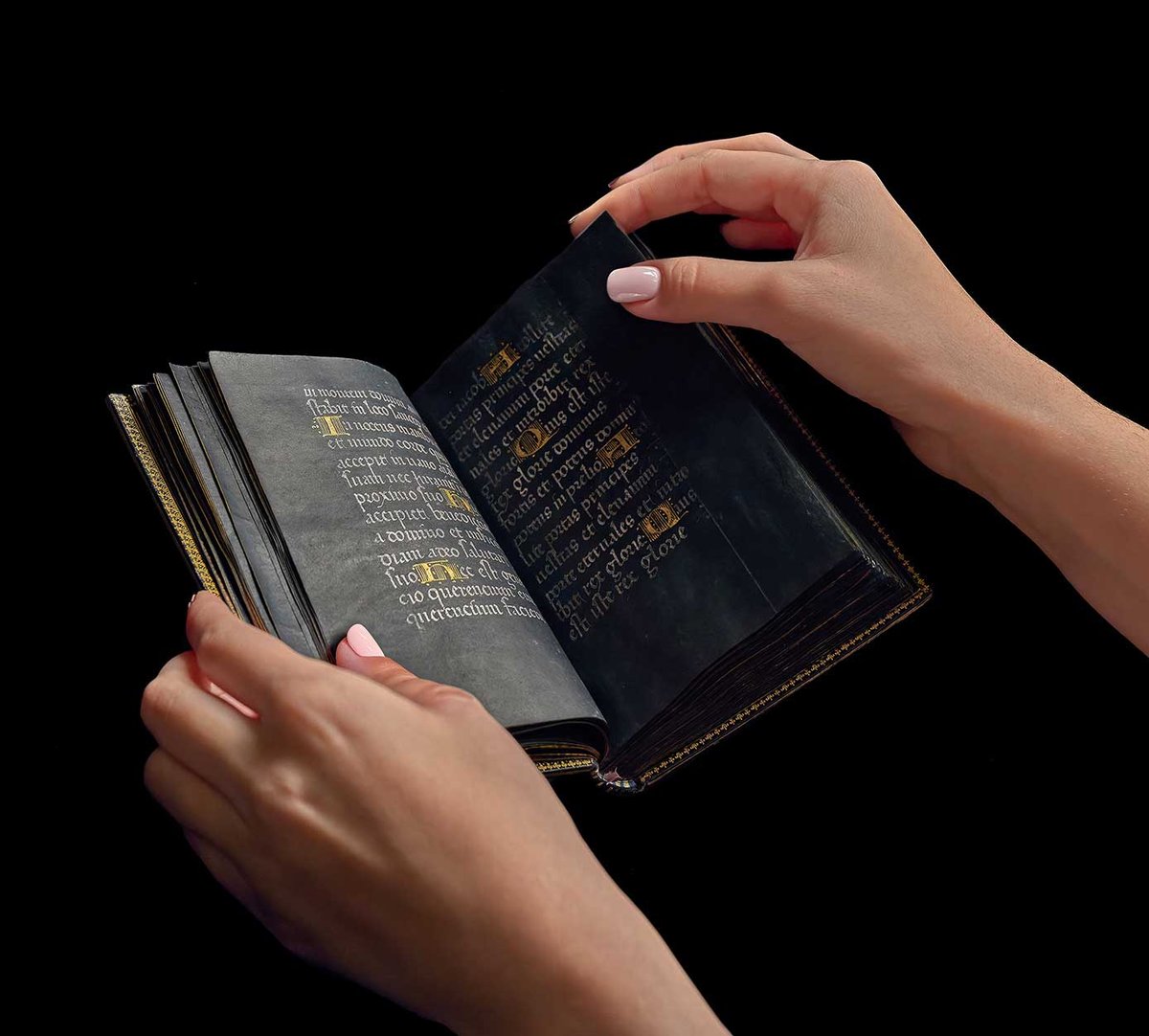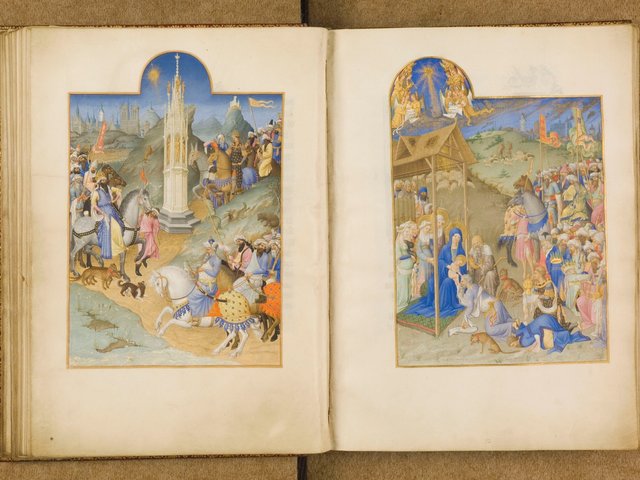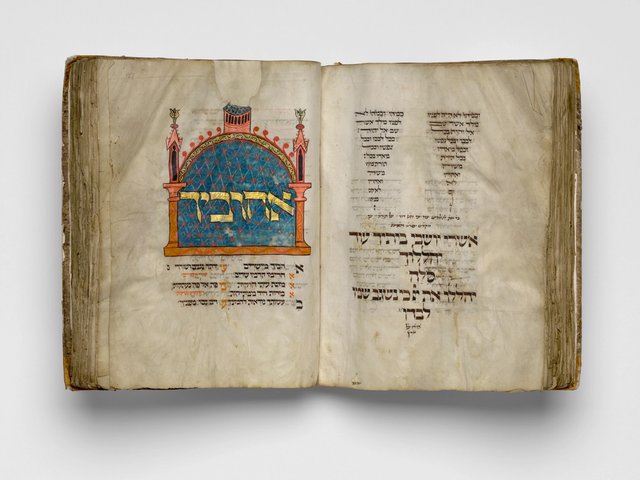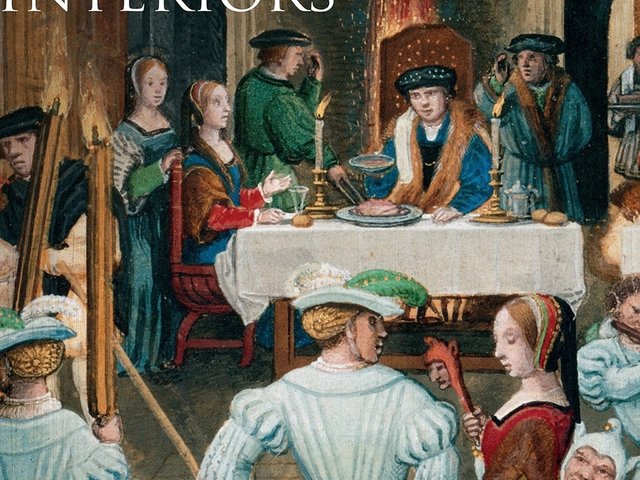The Hispanic Society Museum & Library in New York has been awarded a 2025 grant from the Tefaf Museum Restoration Fund to support the conservation of the Black Book of Hours, one of the institution’s most significant manuscripts.
Created around 1458, the manuscript is one of only seven surviving illuminated manuscripts of its kind. It is distinguished by gold and silver script on black-coloured vellum, a technique that exemplifies the high level of craftsmanship associated with the late Middle Ages.
“The Black Book of Hours serves as a tangible connection to the past,” says John O’Neill, the curator of manuscripts and rare books at the Hispanic Society. “It embodies the artistic and historical narratives that the Hispanic Society seeks to celebrate and share.” Founded in 1904 by the American philanthropist and scholar Archer M. Huntington, the society houses an encyclopedic collection that includes rare books, manuscripts and decorative arts as well as works by artists including El Greco, Goya and Joaquín Sorolla.
The Musée Condé in Chantilly, north of Paris, has also been awarded funding to restore the 15th-century Très Riches Heures du Duc de Berry, one of the most renowned illuminated manuscripts of the period. The manuscript—sometimes referred to as the “Mona Lisa of prayer books”—has been kept from public view for decades because of its fragile condition.
Created for the Duke of Berry, the Très Riches Heures was begun by the Limbourg brothers—Pol, Herman and Jean—artists known in their day for the naturalistic detail of their compositions. After their deaths, work on the manuscript continued by artists including Barthélemy d’Eyck and Jean Colombe. The manuscript’s most celebrated section is its calendar, featuring 12 full-page miniatures that depict scenes of Medieval life set against seasonal landscapes. Its calendar pages are due to go on display at the French museum from 7 June to 5 October.
Visitors to Tefaf New York, meanwhile, will be able to view the Black Book of Hours before restoration. “This is a rare opportunity to view the manuscript in its current condition,” says Paul van den Biesen, the head of collectors and museums at Tefaf.
The book is believed to have belonged to María of Castile (1401-58), queen consort of Aragón. She acted as regent during her husband Alfonso V’s absences and played a central role in the cultural life of the Aragonese court. A 17th-century note refers to her ownership, and a coat of arms within the manuscript features the symbols of the Crown of Castile. The manuscript was created in the final year of her life.
Though incomplete, the volume remains among the most requested in the Hispanic Society’s collection and continues to prompt scholarly debate. The conservation project aims to enhance both physical and digital access for researchers. Initial treatment will focus on removing the manuscript’s 19th-century blue Morocco leather binding, which at present stresses the folios when opened. Each folio will be photographed in high resolution, and micro-sampling techniques will be used to analyse the vellum and metallic script. “This will significantly enhance global accessibility and scholarly research,” Van den Biesen says.
Established in 2012, the Tefaf fund has so far supported more than 25 restoration projects. These include The Crossing of the Red Sea (1521) by Ludovico Mazzolino at the National Gallery of Ireland, Dublin, and Pietro Francavilla’s Venus with a Nymph and Satyr (around 1600) at the Wadsworth Atheneum Museum of Art, in Hartford, Connecticut.
Public museums can apply to the fund, which must be used for restoration and related research by qualified conservators. The €50,000 fund is typically awarded to two cultural institutions every year. “Applications are open to all art forms and works from any period,” Van den Biesen says.






